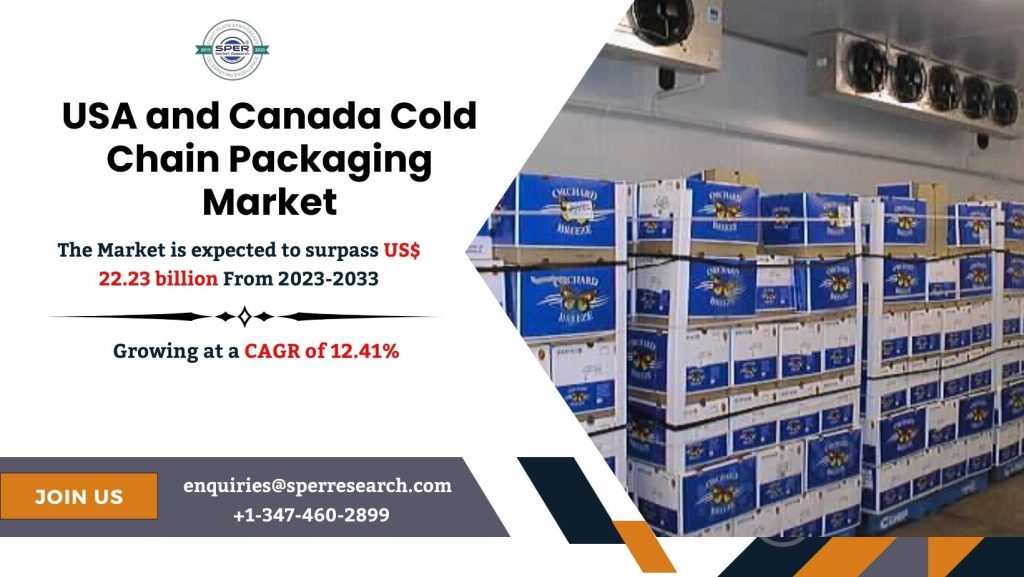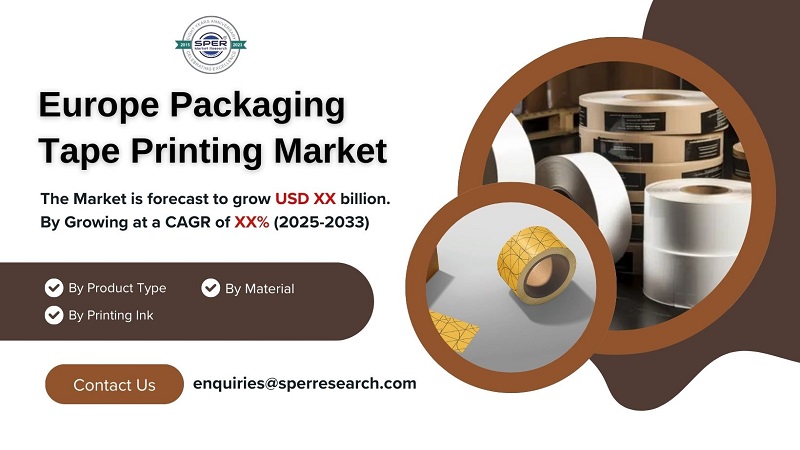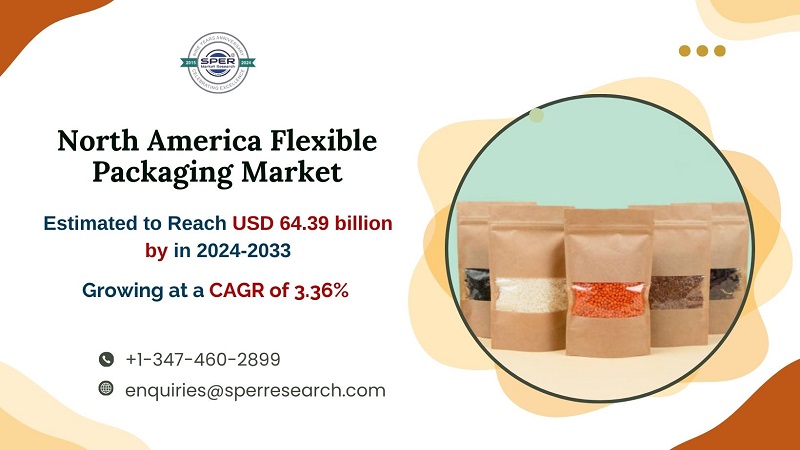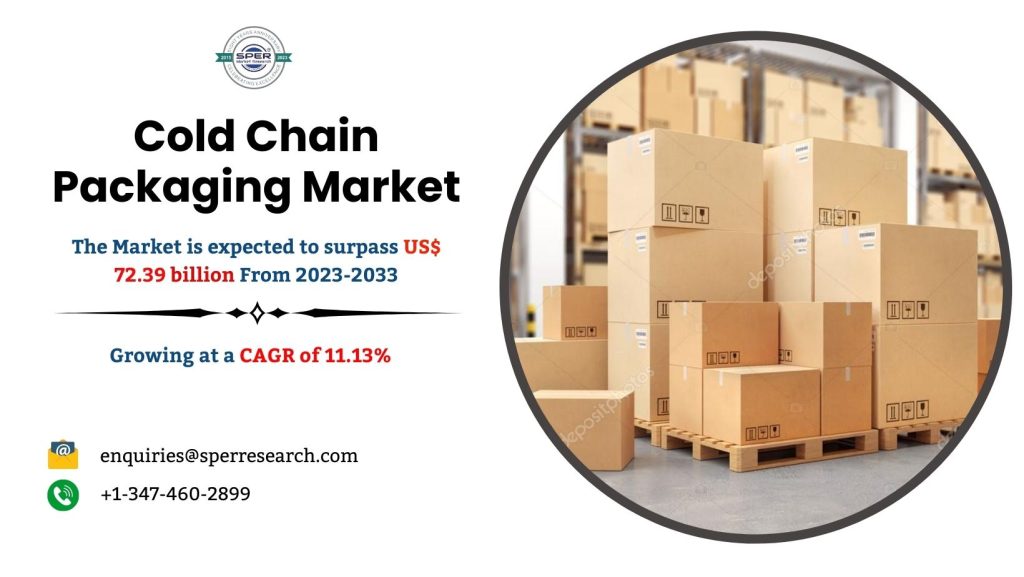Market Overview and Growth Insights: The cold chain refers to a specialized logistics network designed to maintain specific low temperatures for products that are highly sensitive to temperature fluctuations. This process is critical for ensuring the safety, quality, and efficacy of perishable items such as food, pharmaceuticals, and certain chemicals. The network relies on the use of various technologies, including insulation, refrigeration systems, refrigerants, and temperature-monitoring devices, to maintain the products within a designated temperature range. Cold chain packaging is integral to preserving the integrity of these products from the point of production to delivery, meeting stringent regulatory standards, and minimizing the risk of temperature-induced spoilage or quality degradation.
As per SPER Market Research’s report, titled “Cold Chain Packaging Market Size- By Product Type, By Application, By Material- Regional Outlook, Competitive Strategies and Segment Forecast to 2033,” the Global Cold Chain Packaging Market is projected to grow to USD 72.39 billion by 2033, reflecting a compound annual growth rate (CAGR) of 11.13%.
Market Drivers: The demand for cold chain packaging is largely driven by the increasing need to preserve temperature-sensitive products, such as vaccines, biologics, and specific food items, which require constant temperature control throughout their journey from manufacturer to consumer. Stringent regulations and industry standards around temperature-controlled transportation are key market drivers. Governments and regulatory bodies around the world enforce strict guidelines to ensure that temperature-sensitive products, particularly pharmaceuticals, are stored and transported under appropriate conditions to guarantee their safety and effectiveness. Globalization of supply chains is another key factor propelling the growth of the cold chain packaging market. As products travel longer distances and pass through different climates, the need for reliable temperature-controlled solutions becomes even more critical. The growing complexity of logistics across regions with varying climates, such as transporting vaccines from one part of the world to another, has made cold chain packaging indispensable for maintaining product integrity.
Download sample PDF copy of this report to understand structure of the complete report @ https://www.sperresearch.com/report-store/cold-chain-packaging-market.aspx?sample=1
Market Challenges: Although there is significant growth potential, the cold chain packaging industry encounters a range of challenges. One of the primary hurdles is the high cost of implementing and maintaining a cold chain logistics system. The use of specialized materials for packaging, refrigeration equipment, and temperature monitoring devices can be expensive. For businesses operating in regions with limited financial resources, these costs can be prohibitive. This challenge is particularly acute in developing countries, where cold chain infrastructure, such as refrigerated storage and transportation networks, is often underdeveloped or non-existent. Another challenge is the complexity and expense of meeting regulatory requirements. Stringent guidelines and standards for cold chain transportation and storage increase operational costs. Non-compliance with these regulations can lead to severe consequences, including fines, product recalls, and reputational damage for businesses. Furthermore, the management of cold chain logistics requires trained personnel who understand the critical nature of maintaining temperature control. A shortage of skilled labor in certain regions can make the implementation and maintenance of cold chain practices more difficult.
Impact of COVID-19: The COVID-19 pandemic had a profound impact on the cold chain packaging market. As the global demand for vaccines surged, the need for reliable cold chain solutions became more critical than ever. The transportation and storage of vaccines and other temperature-sensitive medical products highlighted the importance of cold chain infrastructure. However, the pandemic also exposed vulnerabilities in the global cold chain network, including production delays, supply shortages, and distribution challenges. The shutdowns, travel restrictions, and factory closures during the pandemic led to significant disruptions in the availability of packaging materials, refrigerants, and temperature monitoring devices. The strain on global cold chain systems during the pandemic further accelerated the need for improved infrastructure and more robust cold chain solutions.
Regional Insights: In terms of regional markets, the United States holds one of the largest market shares in the global cold chain packaging industry. The country’s robust pharmaceutical and healthcare sectors rely heavily on cold chain logistics for the safe and effective transport of vaccines, biologics, and other temperature-sensitive medical products. The presence of key market players such as Cold Chain Technologies, CREOPACK, Cryopak, Intelsius, and Nordic Cold Chain Solutions in the U.S. has further bolstered the market’s growth. Other regions, such as Europe and Asia Pacific, are also witnessing strong growth due to the rising demand for cold chain solutions in food and pharmaceutical industries.
Key Market Players: Some of the leading companies in the cold chain packaging market include Cold Chain Technologies, CREOPACK, Cryopak, Intelsius, and Nordic Cold Chain Solutions. These companies are at the forefront of innovation in cold chain packaging solutions, offering a variety of products such as insulated containers, temperature-controlled shipping boxes, and active and passive refrigeration technologies. These companies are investing heavily in research and development to create more efficient and cost-effective cold chain solutions that meet the increasing demand for temperature-sensitive product transportation.
Global Cold Chain Packaging Market Segmentation:
By Product Type: Based on the Product Type, Global Cold Chain Packaging Market is segmented as; EPS Containers, Pallet Shippers, PUR Containers, Vacuum Insulated Panels, Others.
By Application: Based on the Application, Global Cold Chain Packaging Market is segmented as; Food, Industrial, Pharmaceuticals (Vaccines, Blood Banking), Others.
By Material: Based on the Material, Global Cold Chain Packaging Market is segmented as; Hydrocarbon, Insulating Material (Expanded Polystyrene, Polyurethane rigid foam, Vacuum Insulated Panel, Cryogenic Tanks, Others), Refrigerant (Fluorocarbons, Inorganics).
By Region: This report also provides the data for key regional segments of Asia-Pacific, Europe, Middle East and Africa, North America, Latin America, Others.
For More Information in Cold Chain Packaging Market, refer to below link –
Cold Chain Packaging Market Share
Others Industry Report –
- Italy Construction Equipment Market Size- By Machinery Type, By Propulsion- Regional Outlook, Competitive Strategies and Segment Forecast to 2033
- Saudi Arabia Motor Insurance Market Growth, Size, Trends Analysis- By Insurance Type, By Distribution Channel- Regional Outlook, Competitive Strategies and Segment Forecast to 2033
Follow Us –
LinkedIn | Instagram | Facebook | Twitter
Contact Us:
Sara Lopes, Business Consultant – U.S.A.
SPER Market Research
enquiries@sperresearch.com
+1-347-460-2899









